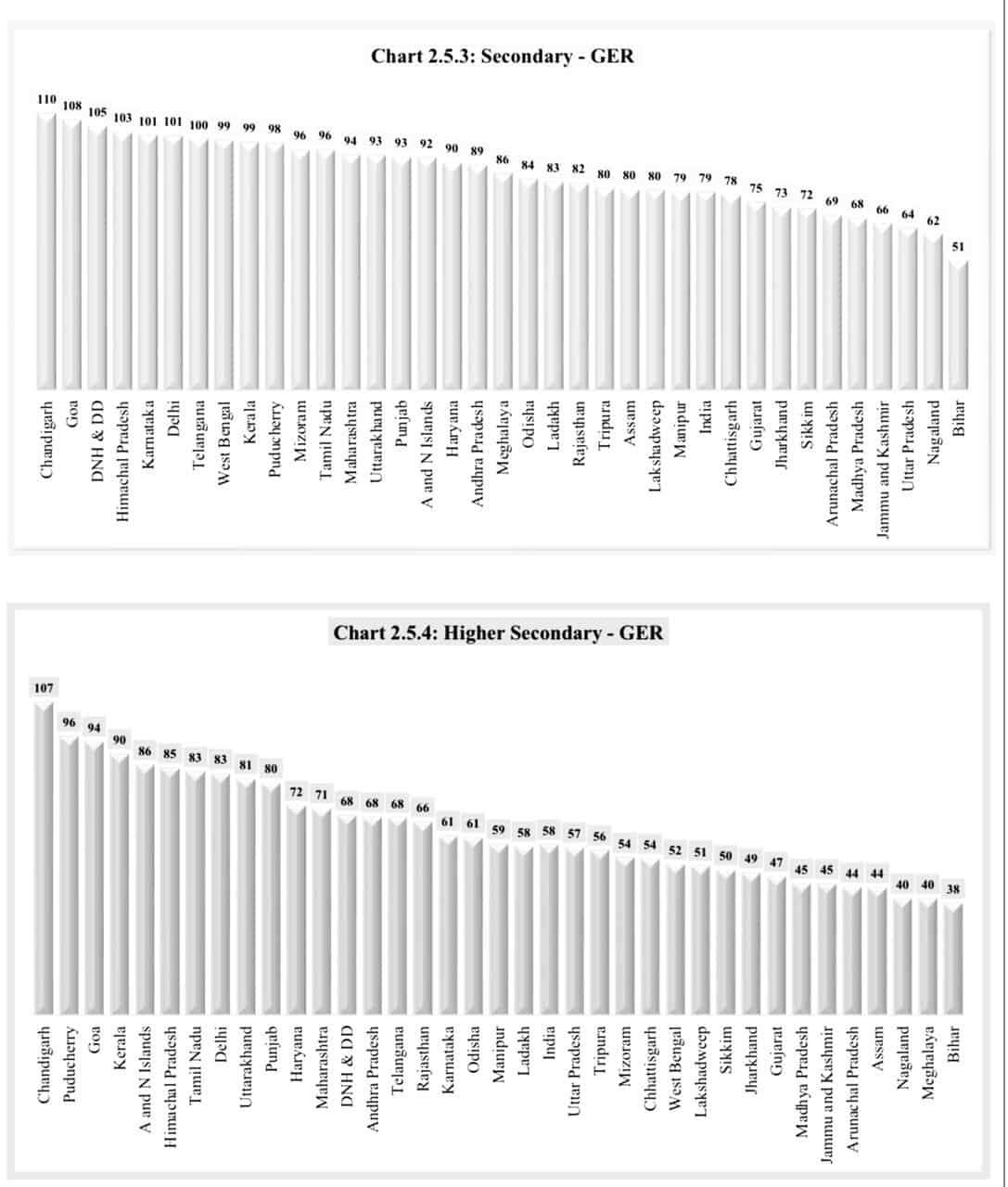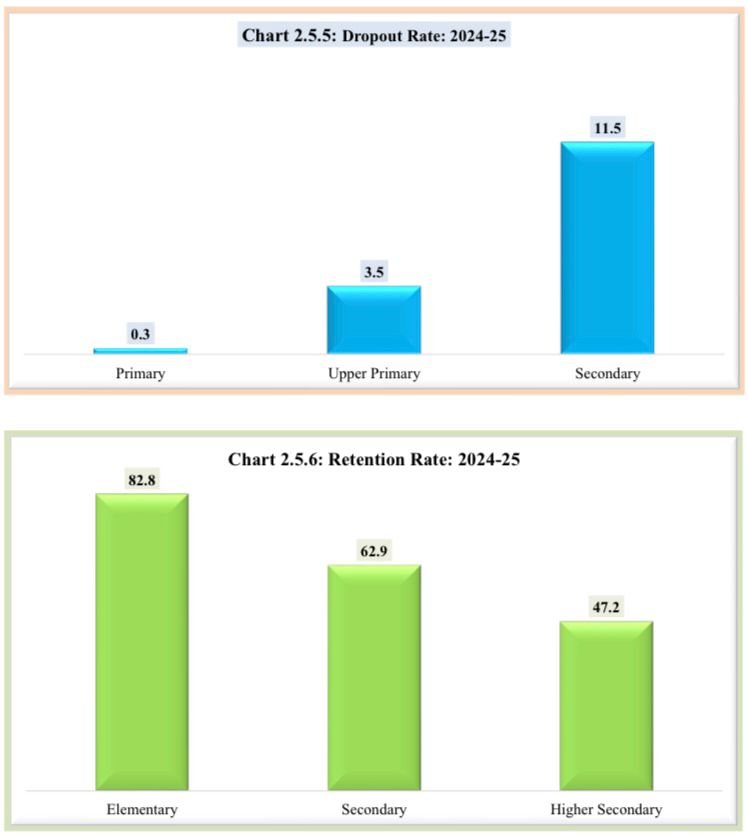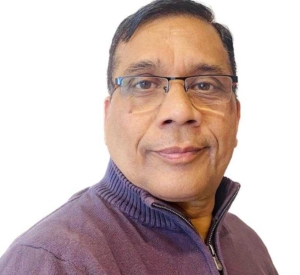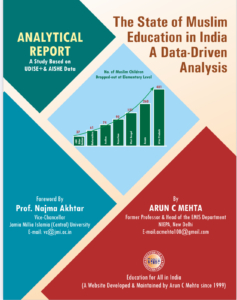Compilation of National Highlights of the UDISE+ data, 2021-22 to 2024-25
Goal of Universal Secondary Education by 2030: Analysis of UDISE+ 2020-21 to 2024-25 Data in the Context of NEP 2020’s
Introduction
India’s National Education Policy (NEP) 2020 envisions achieving a 100% Gross Enrolment Ratio (GER) across all school education levels by 2030, with a particular focus on universalizing secondary education to ensure equitable and inclusive learning opportunities. This aligns with Sustainable Development Goal 4 (SDG 4) for quality education. The Unified District Information System for Education Plus (UDISE+), maintained by the Ministry of Education, provides comprehensive data on enrolment, dropout, transition, retention, infrastructure, and teacher availability. This article analyses UDISE+ data from 2020-21 to 2024-25 to evaluate India’s progress toward universal secondary education, identifies gaps, and proposes strategies to bridge them using Samagra Shiksha provisions. It correlates findings with the NSSO 2025 survey data from Education for All in India to offer a holistic perspective. Limitations, particularly the need for state-specific data, are highlighted, and graphical representations are included to illustrate trends. The analysis assesses India’s trajectory toward the 2030 goal and recommends actionable measures to address challenges.
The present article exclusively uses UDISEplus data from 2020-21 to 2024-25; incidentally UDISEPlus 2024-25 data is the most recent one released on 28 August 2025. The reports caution that while UDISE 2022-23 to UDISE 2024-25 are comparable, the new data collection methodology (SDMS) introduced in 2022-23 makes it incompatible with UDISEPlus 2021-22 and earlier data. However, upon reviewing the UDISEPlus 2022-23, 2023-24 & 2024-25 efficiency indicators, such as dropout, transition, and retention rates, have been computed. These calculations depend on the data from UDISEPlus 2021-22 and prior years, making both data sets necessary for such analysis. Prof. Arun C. Mehta, a former professor at NIEPA who played a key role in the development of DISE/UDISE over 15 years, argues that despite the differences in data collection methodology, the indicators, rates, and ratios remain comparable; this is because they reflect the situation at a specific point in time, regardless of the data collection methodology used.
Another point of caution is the cut-off date. While UDISEPlus 2020-21 and 2021-22 data has a cut-off date of 30 September 2020 and 30 September 2021 respectively; rest sets of data during 2022-23 to 2024-25, the cut-off date is 31 March of the respective years; a significant departure; historically educational data both administrative and All India School Education Survey used to have 30 September of the respective year as its date of reference.
Review of UDISE+ Data: 2020-21 to 2024-25
The UDISE+ data provides a detailed snapshot of India’s school education system across primary, upper primary, secondary, and higher secondary levels. The following sections analyse key indicators, to assess progress toward the NEP 2020 goal of 100% GER at the secondary level.
Enrolment Trends
- Total Enrolment (Primary to Higher Secondary): Enrolment decreased from 25.38 crore in 2020-21 to 23.29 crore in 2024-25, a decline of approximately 2.09 crore students. This reduction, partly due to improved data accuracy from student-wise data collection (SDMS) introduced in 2022-23, raises concerns about the status of unaccounted students, as noted by Prof. Arun C. Mehta.
- Level-Specific Enrolment:
- Primary: Enrolment fell from 12.20 crore in 2020-21 to 10.44 crore in 2024-25, signalling access issues at the foundational level.
- Upper Primary: Enrolment remained stable, declining slightly from 6.59 crore to 6.37 crore.
- Secondary: Enrolment decreased from 3.90 crore to 3.72 crore, reflecting retention challenges.
- Higher Secondary: Enrolment grew marginally from 2.69 crore to 2.76 crore, but remains low relative to the eligible population.
|
Gross Enrolment Ratio (GER) – All Categories |
|||||
|
Level |
2020-21
(As on 30/09/2020) |
2021-22
(As of 30/09/2021) |
2022-23
(Cut-off 31/03/2024) |
2023-24
(Cut-off 31/03/2024) |
2024-25 (31/03/2024) |
| Gross Enrolment Ratio (GER) – Primary | 103.3 | 103.39 | 96.2 | 93.0 | 90.9 |
| Gross Enrolment Ratio (GER) – Upper Primary | 92.2 | 94.67 | 90.2 | 89.7 | 90.3 |
| Gross Enrolment Ratio (GER) – Elementary | 99.1 | 100.13 | 93.9 | 91.7 | 90.6 |
| Gross Enrolment Ratio (GER) – Secondary | 79.8 | 79.56 | 79.2 | 77.4 | 78.7 |
| Gross Enrolment Ratio (GER) – Higher Secondary | 53.8 | 57.56 | 56.8 | 56.2 | 58.4 |
Gross Enrolment Ratio (GER)
The GER measures total enrolment as a percentage of the age-specific population, serving as a key indicator for universalization. Trends are presented below:
- Primary: GER declined from 103.3% in 2020-21 to 90.9% in 2024-25, falling below 100%, indicating incomplete coverage.
- Upper Primary: GER slightly decreased from 92.2% to 90.3%, remaining below the NEP target.
- Secondary: GER stagnated from 79.8% in 2020-21 to 78.7% in 2024-25, far from the 100% goal.
- Higher Secondary: GER improved from 53.8% to 58.4%, but only about 58% of eligible students are enrolled.

GER-at-Secondary-Hr.-Secondary-Levels-UDISEPlus-2024-25, Source: UDISEPlus 2024-25 Report
|
Net Enrolment Ratio (GER) – All Categories |
|||||
| Level | 2020-21
(As on 30/09/2020) |
2021-22
(As of 30/09/2021) |
2022-23
(Cut-off 31/03/2024) |
2023-24
(Cut-off 31/03/2024) |
2024-25 (31/03/2024) |
| Net Enrolment Ratio (NER) – Primary | 92.7 | 88.6 | 80.6 | 79.0 | 76.4 |
| Net Enrolment Ratio (NER) – Upper Primary | 74.1 | 71.3 | 64.8 | 66.0 | 67.3 |
| Net Enrolment Ratio (NER) – Elementary | 92.1 | 90.5 | 85.5 | 83.3 | 82.8 |
| Net Enrolment Ratio (NER) – Secondary | 52.5 | 47.9 | 47.6 | 48.3 | 47.5 |
| Net Enrolment Ratio (NER) – Higher Secondary | 34.7 | 34.2 | 33.8 | 33.8 | 35.8 |
Net Enrolment Ratio (NER)
The NER, measuring age-appropriate enrolment, reveals significant gaps:
- Primary: NER dropped from 92.7% in 2020-21 to 76.4% in 2024-25, indicating many children are out of school.
- Upper Primary: NER fell from 74.1% to 67.3%, reflecting retention issues.
- Secondary: NER remained nearly static at 47.5% in 2024-25, with only about half of the eligible population enrolled in age-appropriate classes.
- Higher Secondary: NER increased slightly from 34.7% to 35.8%, covering just over one-third of the eligible population.
The gap between GER and NER (22.4 percentage points nationally in 2023-24) indicates issues like late entry and grade repetition, particularly at secondary and higher secondary levels.
|
Net Enrolment Ratio (GER) – All Categories |
|||||
| Level | 2020-21
(As on 30/09/2020) |
2021-22
(As of 30/09/2021) |
2022-23
(Cut-off 31/03/2024) |
2023-24
(Cut-off 31/03/2024) |
2024-25 (31/03/2024) |
| Adjusted-NER Enrolment Ratio (Adjusted-NER) – All Categories | |||||
| Adjusted-Net Enrolment Ratio (Adjusted-NER) – Primary | 98.6 | 99.1 | 89.1 | 85.9 | 83.2 |
| Adjusted-Net Enrolment Ratio (Adjusted-NER) – Upper Primary | 84.4 | 87.3 | 77.8 | 76.2 | 77.9 |
| Adjusted-Net Enrolment Ratio (Adjusted-NER) – Elementary | 96.0 | 96.5 | 89.4 | 87.2 | 86.8 |
| Adjusted-Net Enrolment Ratio (Adjusted-NER) – Secondary | 61.8 | 64.7 | 60.9 | 60.5 | 59.8 |
Dropout Rates
Dropout rates highlight retention challenges, as shown below:
- Primary: Dropout rates peaked at 7.8% in 2022-23 but dropped to 0.3% in 2024-25, a positive development.
- Upper Primary: Rates decreased from 8.1% in 2022-23 to 3.5% in 2024-25.
- Secondary: Rates declined from 16.4% in 2022-23 to 11.5% in 2024-25, but remain high, posing a barrier to universalization.
|
Dropout Rates – All Categories |
|||||
| Parameters | 2020-21
(As on 30/09/2020) |
2021-22
(As of 30/09/2021) |
2022-23
(Cut-off 31/03/2024) |
2023-24
(Cut-off 31/03/2024) |
2024-25 (Cut-off 31/03/2024) |
| Dropout Rates – Primary | 0.8 | 1.45 | 7.8 | 1.9 | 0.3 |
| Dropout Rates – Upper Primary | 1.9 | 3.02 | 8.1 | 5.2 | 3.5 |
| Dropout Rates – Secondary | 14.6 | 12.61 | 16.4 | 14.1 | 11.5 |

Dropout-and-Retention-Rates-UDISEPlus-2024-25, Source: UDISEPlus 2024-25 Report
Transition and Retention Rates
- Transition Rates:
- Primary to Upper Primary: Improved from 87.9% in 2022-23 to 92.2% in 2024-25.
- Upper Primary to Secondary: Rose from 83.3% in 2023-24 to 86.6%.
- Secondary to Higher Secondary: Increased from 71.3% to 75.1%, but remains low.
- Retention Rates:
- Primary: Improved from 85.4% in 2022-23 to 92.4% in 2024-25.
- Elementary: Rose from 75.8% to 82.8%.
- Secondary: Slightly declined to 62.9%.
- Higher Secondary: Improved to 47.2%, but only 47% of students starting Class 1 reach Class 12.
| Transition Rates – All Categories | |||||||
| Parameters | 2020-21
|
2021-22
|
2022-23
|
2023-24
|
2024-25 | ||
| Transition Rates Primary to Upper Primary | 92.1 | 93.18 | 87.9 | 88.8 | 92.2 | ||
| Transition Rates Upper Primary to Secondary | 91.3 | 88.81 | 86.7 | 83.3 | 86.6 | ||
| Transition Rates Secondary to Higher Secondary | 73.3 | 78.41 | 71.3 | 71.5 | 75.1 | ||
| Retention Rate – All Categories | |||||||
| Primary (Class 1 to Class 5) | 95.4 | 90.9 | 85.4 | 92.4 | |||
| Elementary (Class 1 to Class 8) | 81.2 | 75.8 | 78.0 | 82.8 | |||
| Secondary (Class 1 to Class 10) | 64.7 | 65.5 | 63.8 | 62.9 | |||
| Higher Secondary (Class 1 to Class 12) | 43.6
|
44.1 | 45.6 | 47.2 | |||
Infrastructure and Teacher Availability
- Pupil-Teacher Ratio (PTR): Improved to 20:1 (Primary), 17:1 (Upper Primary), 15:1 (Secondary), and 23:1 (Higher Secondary) in 2024-25, within NEP’s 30:1 benchmark. However, approximately 10 lakh teacher vacancies persist, particularly at elementary levels.
- Infrastructure: Progress includes 93.6% of schools with electricity, 99.3% with drinking water, and 98.6% with toilets in 2024-25. However, only 64.7% have computers and 63.5% have internet access, limiting digital learning.
Correlation with NSSO 2025 Survey Data
The NSSO 2025 survey, referenced on Education for All in India, reports that 16.8% of children aged 6–17 years (approximately 47.4 million) are out of school, aligning with UDISE+’s declining enrolment trends. The survey highlights socio-economic barriers (e.g., poverty, early marriage, lack of school proximity) in states like Bihar, Uttar Pradesh, and Madhya Pradesh, correlating with low NER and high dropout rates in these regions. UDISE+’s school-based data may underreport out-of-school children (OOSC), as it excludes those who never enrolled. The NSSO data emphasizes the need for household surveys to complement UDISE+ for accurate OOSC estimates and targeted interventions.
Limitations of the Analysis
- Lack of State-Specific Data: All-India data masks regional disparities. States like Kerala and Tamil Nadu have near-universal enrolment, while Bihar and Uttar Pradesh lag, as noted on Education for All in India. State-specific analysis is essential for targeted interventions.
- Data Comparability Issues: The shift to SDMS in 2022-23 and the change in reference date (March 31 vs. September 30) limit comparability with earlier data, affecting trend analysis for dropout and retention rates.
- Incomplete OOSC Estimates: UDISE+ may underreport OOSC, necessitating household surveys like NSSO 2025 for accuracy.
- Limited Indicators: Key indicators like GER and NER are provided, but metrics like survival rate or educational wastage rate are absent, limiting system efficiency analysis.
- Delayed Data Release: State-specific data for 2022-23 and 2023-24 are not fully available, hindering timely policy planning. For example, unlike previous years total enrolment (Grades 1 to 12) is presented including pre-primary enrolment.
Unfinished Task
UDISEPlus 2020-21 to 2024-25 data reveals that the gap to achieve 100% GER at the secondary level by 2030 is significant:
- Secondary GER Gap: The 2024-25 GER of 78.7% is 21.3 percentage points below the NEP target, requiring an annual increase of approximately 3.55% – challenging given the stagnant trend (79.8% in 2020-21 to 78.7% in 2024-25).
- Out-of-School Children (OOSC): Approximately 47.4 million children aged 6–17 years are out of school, with low NER (47.5%) at the secondary level indicating significant exclusion.
- Retention and Transition: A secondary retention rate of 62.9% and a secondary-to-higher-secondary transition rate of 75.1% mean over one-third of students do not complete secondary education.
Role of Samagra Shiksha Provisions
Samagra Shiksha, with Rs. 37,010 crore allocated in 2024-25, supports universal education through:
- Financial Incentives: Scholarships, free transportation, and mid-day meals to reduce dropouts, especially for girls and marginalized groups.
- Infrastructure Development: Expanding secondary schools and digital infrastructure (e.g., smart classrooms, internet access).
- Teacher Recruitment: Addressing 10 lakh teacher vacancies and enhancing training to improve learning outcomes.
- Targeted Interventions: Allocating resources to low-performing states based on state-specific data.
- Community Engagement: Addressing socio-cultural barriers, such as early marriage, as highlighted by NSSO 2025 data.
Strategies to Achieve 100% GER at Secondary Level by 2030
With a secondary GER of 78.7% and high dropout rates (11.5%), India is at risk of missing the 2030 target. Recommended strategies include:
- Enhance Retention: Implement mentorship, vocational training under NSQF, and financial support to reduce dropouts.
- Improve Transitions: Develop bridge programs to ease progression from upper primary to secondary, addressing curriculum and infrastructure gaps.
- Address Regional Disparities: Use state-specific data to prioritize low-performing states like Bihar and Uttar Pradesh.
- Strengthen Data Systems: Integrate UDISE+ with household surveys to accurately track OOSC.
- Expand Digital Access: Increase computer and internet facilities to support modern learning, particularly in rural areas.
Concluding Observations
The UDISE+ data from 2020-21 to 2024-25 highlights significant challenges in achieving NEP 2020’s goal of 100% GER at the secondary level by 2030. Declining enrolment, a stagnant secondary GER (78.7%), low NER (47.5%), and high dropout rates (11.5%) indicate systemic barriers. The 21.3 percentage point GER gap and 47.4 million OOSC underscore the scale of the challenge; emphasizing the urgency of intervention. State-specific data, as emphasized on Education for All in India, is critical to address regional disparities. Samagra Shiksha offers a robust framework, but success depends on filling teacher vacancies, improving digital infrastructure, and engaging communities. Without accelerated, evidence-based efforts, India risks missing the 2030 target, necessitating urgent policy reforms to ensure universal secondary education.
Suggested Readings
- UDISE+ Data, 2020-21 to 2024-25, Ministry of Education, Government of India.
- Education for All in India. https://educationforallinindia.com
- NSSO 2025 Survey Data, as cited on Education for All in India.


